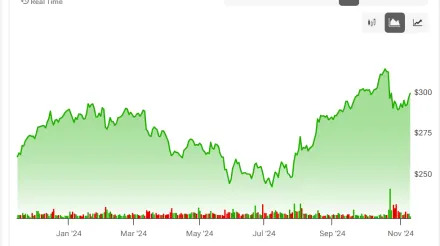(Bloomberg) -- A gauge of Australian monthly inflation cooled in July, suggesting price pressures began to ease in the current quarter though not fast enough to warrant early interest-rate cuts.
The consumer price indicator climbed 3.5% from a year earlier, down from 3.8% and just above economists’ estimate, government data showed Wednesday. The trimmed mean core measure, which smooths out volatile items, advanced 3.8% versus 4.1% a month earlier. The result was driven by slowing price growth in clothing and footwear, electricity and fuel.
With the data unlikely to sway the Reserve Bank from its hawkish stance, the yield on policy sensitive three-year notes climbed to 3.54% while the local currency rose as much as 0.3% to erase its year-to-date loss against the greenback. Money markets are still pricing in a rate cut in December.
“It looks like markets are more agitated by the slight upside miss to the headline index than accepting that the underlying story seems to be improving,” said Robert Carnell, head of Asia-Pacific research, ING Groep NV. “We are encouraged by this latest data, which we think makes a first-quarter 2025 cut look less speculative.”
The data come after RBA Governor Michele Bullock earlier this month said she doesn’t expect rate cuts this year and indeed warned further policy tightening may still be needed. The rate-setting board left the benchmark at a 12-year high of 4.35% three weeks ago, saying it remains vigilant to upside risks for inflation.
The RBA’s goal is to bring consumer prices back within its 2%-3% target.
“Inflation is still sticky and stubborn in our economy, but it’s coming down,” Treasurer Jim Chalmers told reporters after the release. “Our cost of living policies are helping.”
RBA policymakers are likely to take a cautious approach to Wednesday’s data given they only include part of the overall CPI basket. Additionally, the July report is skewed toward goods rather than services where price pressures are proving more persistent.
July’s cooling was largely driven by energy subsidies from both national and state governments to households which had resulted in a 6.4% fall in the month, the data showed.
“Excluding the rebates, electricity prices would have risen 0.9%,” Leigh Merrington, ABS acting head of prices statistics, said in a statement.
What Bloomberg Economics Says...
“Disinflation has resumed in Australia, with lower fuel prices and cost-of-living subsidies putting downward pressure on price gains. While welcome, further evidence will be needed to persuade the RBA that it’s time to pivot on rates.”
— James McIntyre, economist
— For the full note, click here
The RBA has held rates this year, while highlighting that aggregate demand still exceeds the economy’s supply capacity. Bullock has expressed a willingness to be patient as she seeks to slow inflation without choking off economic growth. The bank’s forecasts show core CPI only returning to the target in late 2025.
“Today’s step down in inflation was largely expected and is unlikely to be sufficient in isolation to cause the RBA to abandon its hawkish bias at its board meeting next month,” said Tony Sycamore, analyst at IG Markets.
The CPI report showed:
--With assistance from Shinjini Datta and Matthew Burgess.
(Updates Bloomberg Economics, markets, adds analyst comment.)





